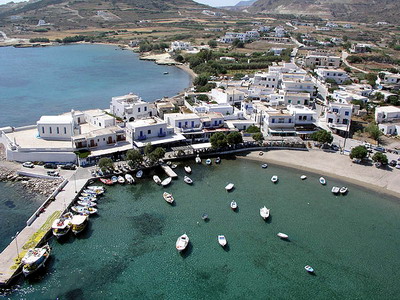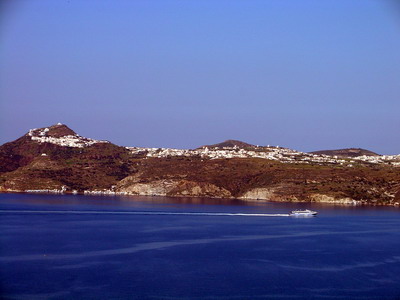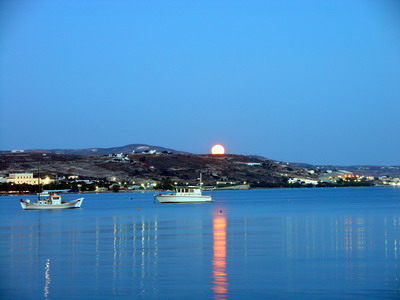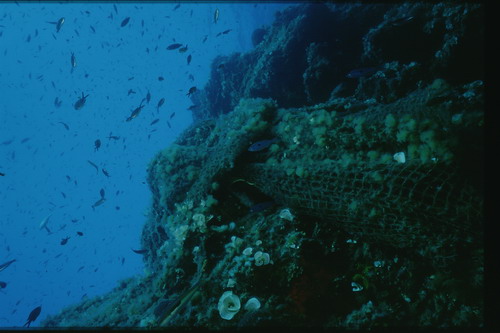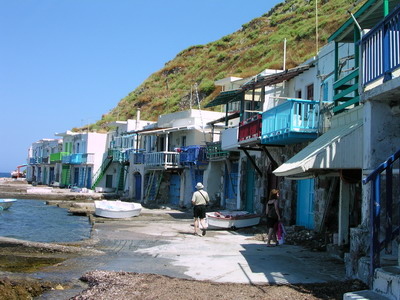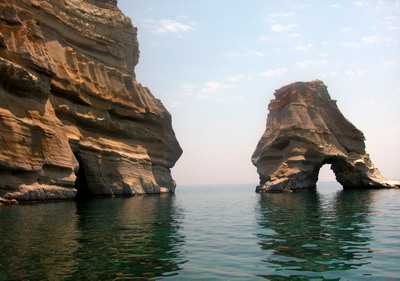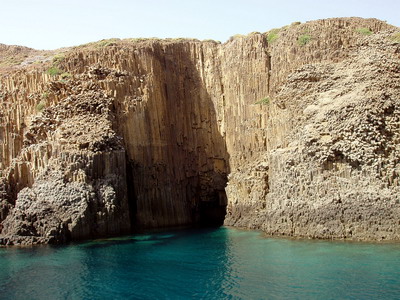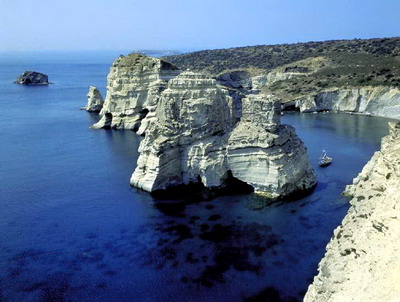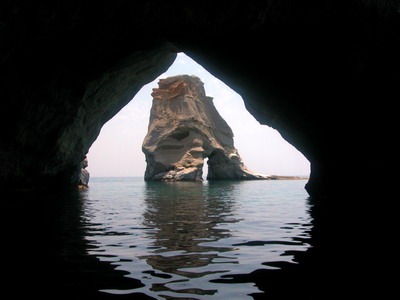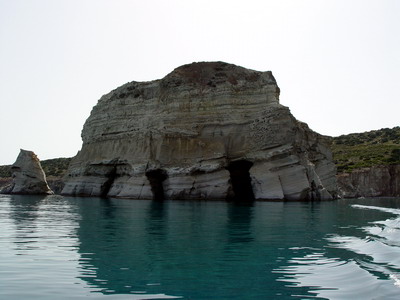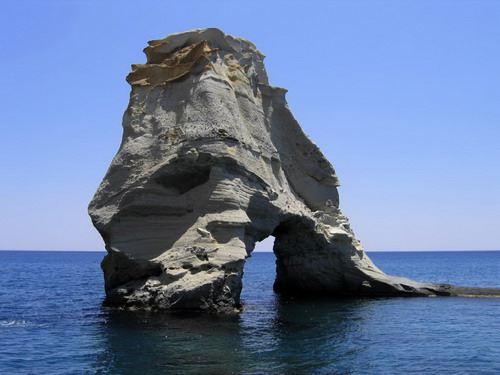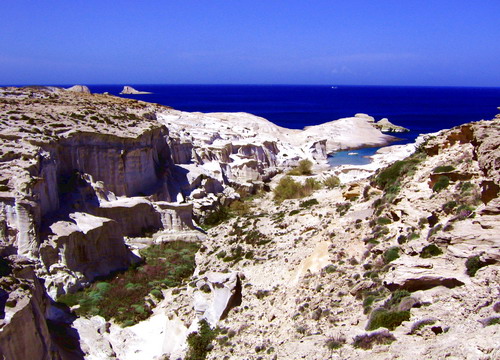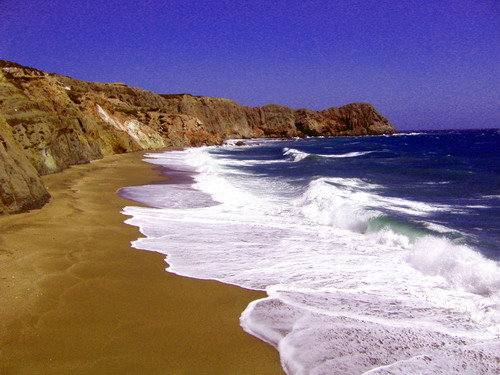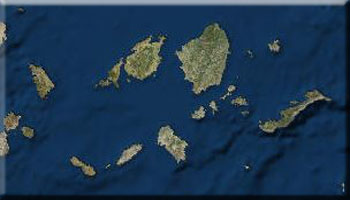Milos flourished in antiquity thanks to its mineral-rich soil. Inhabited since Neolithic times (7000 B.C.), it grew wealthy by trading obsidian, a black volcanic rock used for making weapons and tools—traces of which have been found in the Peloponnese, on Crete and Cyprus, and as far away as Egypt.
In the Early Bronze Age (2800-1100 B.C.), the island had a prominent role in the Cyclades, as evidenced by the emergence of an entire civilization centered on the ancient city of Phylakope. The arrival of the Dorians in Hellenistic times, around 1000 B.C., is marked by the founding of a new city at the site of present-day Klima.
Milos fought with the other Greeks against the Persians at the battles of Salamis and Plataea, but the city was destroyed by Athens in 415 B.C. in retaliation for its neutrality in the Peloponnesian War.
Milos came under the rule of Macedonia until 311 B.C., then passed into the hands of the Egyptians. The Ptolemies’ supremacy at sea helped Milos rebuild its economy and under the island’s renewed prosperity, the arts flourished. The famed statue of Aphrodite of Milos, also known as the Venus de Milo, currently at the Louvre Museum in Paris dates from this period, as does the 2.5-meter statue of Poseidon in the collection of the National Archaeological Museum in Athens.
Under Roman rule, Milos acquired a marble theater. In the first century, the island converted to Christianity, as evidenced by the Catacombs — the largest complex of underground burials in Greece and one of the most important in the world.









